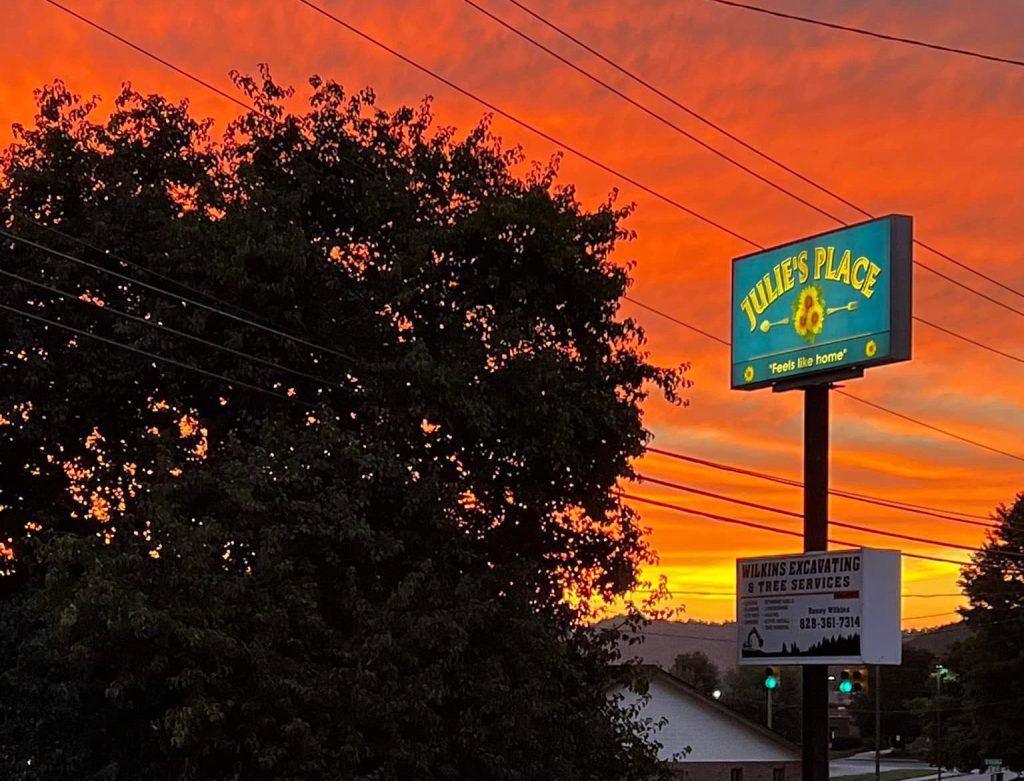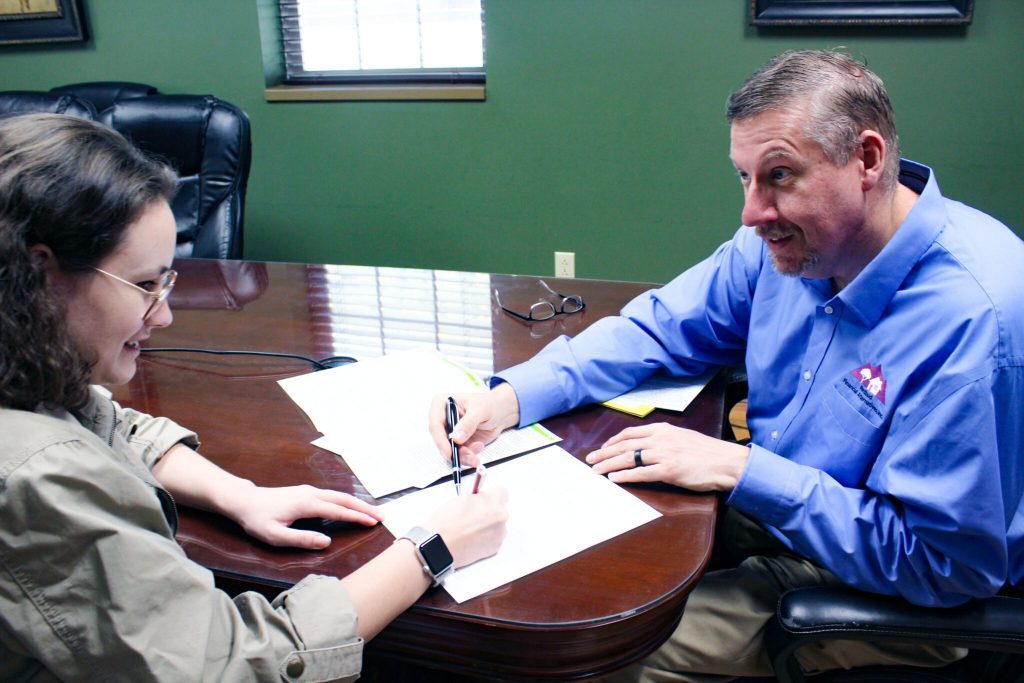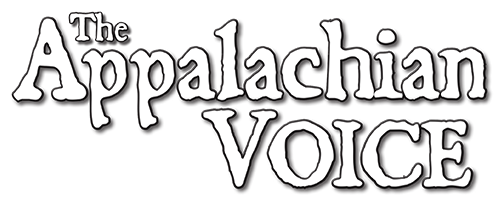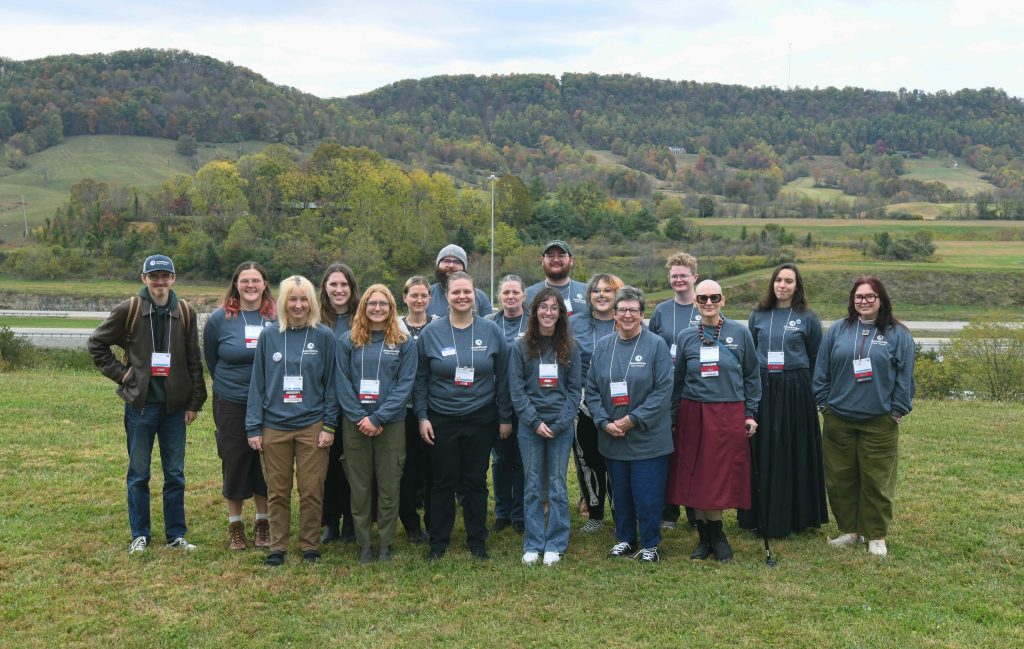Economic First Responders: CDFIs, The Unsung Heroes of Appalachian Financial Services

Just when Julie Wilkins was ready to quit the food service industry, she saw a new path ahead: owning a restaurant.
Haney’s Restaurant, which she helped establish and poured her heart and soul into as a manager, was up for sale. Wilkins’ mentor, who owned the space, encouraged her to purchase it, but she could not obtain a small business loan due to her poor credit score. And then she began to run out of time.
“I could not wait for them to make me jump through the many hoops that most of those lenders put you through,” says Wilkins.
Shortly before the deadline to purchase the property expired, Wilkins connected with Mountain Bizworks, a community development financial institution, or CDFI, based in Asheville, North Carolina. Mountain Bizworks helped her access funding and make her dream come true.
A few years later, Wilkins’ staff is serving up her favorite chicken-fried chicken, meatloaf and other Southern comfort food in a restaurant that now bears her name: Julie’s Place.
“Mountain Bizworks was a godsend,” says Wilkins.
A long history and uncertain future
CDFIs like Mountain BizWorks are place-based, mission-oriented credit unions, banks, loan funds, venture capital providers or microloan funds that support economic growth and stability in traditionally underserved or overlooked communities.
“That’s a designation by the U.S. Department of the Treasury,” says Christine Laucher, strategic partnership manager and southwestern regional manager at Mountain BizWorks. Qualifying CDFIs must direct 60% of their financing to specific regions or targeted populations, such as low-income communities or specific ethnic or racial populations.
Laucher says CDFIs were designed to “fill in the capital gap” for individuals and businesses that have difficulty accessing traditional financing. From affordable housing projects to personal debt consolidation, CDFIs can help turn a “no” into a “yes” for those who need it most.
“We will take the time to work with folks that need extra help,” says Bill Greenleaf, executive director of impact lending at Locus, a Virginia-based CDFI. “The actual projects are viable. They just may not have a lot of experience or money in the bank to provide support if something goes wrong.”
Clint Gwin, president and CEO of Pathway Lending, a Nashville-based CDFI, describes CDFIs as an “old industry” with a “new brand.”
“If you look at our history over time, CDFIs have gone into markets that no one wanted to serve,” says Gwin. “It’s been a successful model for a long time. It is now more formalized.”
Revolving loan funds, peer-to-peer lending and other ways of economically supporting vulnerable populations have existed for hundreds of years. The modern CDFI industry emerged in response to redlining, a practice where banks routinely denied financial services in racially and ethnically diverse communities, according to a report from the CDFI Finance Network, the country’s leading network of CDFIs.
“CDFIs came out of the Civil Rights movement,” Gwin says.
In 1973, the founders of ShoreBank, considered the country’s first CDFI, took over a failing bank in a predominantly Black neighborhood of Chicago to demonstrate that investing in current or formerly redlined communities was not only possible but essential.
Two decades later, Congress passed the bipartisan Riegle Community Development and Regulatory Improvement Act of 1994, establishing the CDFI Fund. This fund serves as the banking industry’s certifying and oversight agency and provides grants, equity investments, loans, technical assistance and other financial support to certified CDFIs. Since its inception, the CDFI Fund has distributed more than $8 billion in monetary awards to CDFIs nationwide.
But right now, the future of the CDFI Fund is uncertain.
On March 14, the Trump Administration issued an executive order focused on “reducing the scope of the federal bureaucracy.” The order targets the CDFI Fund and seven other entities, including the United States Interagency Council on Homelessness and the Minority Business Development Agency.
Within a few days of the announcement, a bipartisan group of senators expressed their continued support for these financial institutions. In a social media statement following the announcement, Donna Gambrell, former director of the CDFI Fund and current president and CEO of Appalachian Community Capital, a CDFI lending intermediary, emphasized the organization’s long-term impact and importance.
“The CDFI Fund isn’t about government charity,” writes Gambrell. “It is about people. It is about businesses. It is about communities building something for themselves and their children.”
Not all CDFIs are solely funded by the CDFI Fund. But a drastic reduction in the agency’s scope and priority investment areas could significantly alter or slow down work providing capital to small business owners, mentorship to entrepreneurs, protections from predatory lending and flexible, fast capital in times of natural disaster.
Financing Appalachian small businesses
Small businesses like Julie’s Place are the backbone of Appalachia, representing 99% of all businesses in the region in 2020, according to an Appalachian Regional Commission report. Of these businesses, 77% have no employees other than the owner.
“We know that entrepreneurship is one of the biggest pathways to generational wealth building for people in Appalachia,” says Christine Laucher with Mountain BizWorks.
Though the Appalachian entrepreneurial spirit is alive and well, many small business owners struggle to access capital and the necessary resources to grow. According to the ARC report, these businesses receive less capital and fewer loans on average than elsewhere in the country.
“CDFIs were created because rural and distressed communities were not being served,” says Annie Forrest, manager of the Appalachian Growth Fund at REDF, a national CDFI headquartered in California. “In Appalachia in particular, we’ve seen the closure of so many local bank branches and the consolidation of banks. When you remove all of that, CDFIs are what is left — really focused on serving local communities.”
Tim Davis, a West Virginia resident, spent two decades in the aviation industry and another 15 years in the oil and gas industry. After watching a “How It’s Made” episode about an innovative recycling plant, he felt compelled to “erase his carbon footprint,” leading him to found Bionic Tire Recycling and build a 42,000-square-foot facility in Preston County, West Virginia.
“Over the next decade, Bionic Tire Recycling will return no less than 80,000 tons of tires and steel back into the supply chain,” estimates Davis, who serves as the company’s chief operating officer.
Davis connected with Kevin O’Connor, senior vice president and central Appalachian market manager at Partner Community Capital, a CDFI based in Charles Town, West Virginia, to fund his operations.
“Without his dedication and knowledge of our project, it would have stalled and may never have gotten off the ground,” says Davis. “For that added service, we are extremely grateful.”
Davis hopes to employ 30 people at the facility in the next few months.
“Everybody wants people to have quality jobs,” says Forrest.
Providing technical assistance and financial education

Certified CDFIs must pair their lending with technical assistance, such as financial education or mentorship programs, because, in Laucher’s view, “We don’t always know what we don’t know.”
“Sometimes folks just don’t know where to look or who to ask [for help],” she continues.
This sentiment rings true for Erin Keene, owner of Bee Noodled in Tazewell, Virginia. Keene had always worked in the food industry but never dreamed of opening a restaurant — she didn’t even think she was a good cook.
“It was my ex-husband’s dream job, and so it was his idea [to open Bee Noodled],” says Keene. “But then he decided, a few weeks in, that he was no longer going to be part of the restaurant or the family. So it is now mine. I took it on — I had to.”
A few weeks later, Billie Roberts, community solutions advisor at Locus, walked into Bee Noodled and began telling Keene about a mentorship program they offered for small businesses.
“I feel like it was fate that she walked in when she did because I was feeling really overwhelmed and kind of lost,” says Keene.
Through Keene’s participation in the Locus Business2Business Mentor program, she could run her ideas by seasoned business owners. These owners helped her tweak her plan and gave her the extra support she needed during a challenging time.
Today, Keene has 16 employees and is getting ready to purchase her own building. She’s thankful for that early guidance and resiliency, which allowed her to be successful and give back to a community she holds dear.
“I’m able to be a second-chance employer and give people jobs who otherwise might have struggled to get a job with their backgrounds,” she says.
‘Do no harm’

Redbud Financial Alternatives, a CDFI located in downtown Hazard, Kentucky, is a “unicorn” in the CDFI world due to its focus on consumer lending, says Managing Director James Caudill.
“In our community, you go from a coal economy, where lots of money is coming in and lots of money is going out,” says Caudill. “As the coal community declines, you don’t have the money coming in, but the money is still going out. And that’s where your predatory lenders, like payday lenders or finance companies, can take advantage because they make it quick and easy.”
Staffed by locals who care deeply about their community, Redbud is an “alternative” to these predatory lenders. It offers small-dollar personal, emergency, automotive and debt consolidation loans and financial education about credit and debt issues.
“We offer much more competitive rates,” says Caudill. “If you pay your loan off early, we lose out on interest.”
In business lending, Clint Gwin of Pathway Lending in Nashville says CDFIs follow a similar code to doctors in that they “don’t want to do a business harm” at the end of the day.
“Some of the predatory lenders that are out there that our clients go to in moments of desperation, they don’t have that same ethos about them,” says Gwin. “It’s really about building sustainable communities. And sustainable communities mean good jobs, small businesses and affordable housing.”
While there is a time and a place for payday lenders, Caudill with Redbud says payday loan services can be a slippery slope into debt due to high interest rates and opaque terms. These lenders are also not localized, meaning they may not be as invested in the communities they serve.
“Everything we do revolves around the communities that we’re in,” says Caudill. “In 10 years, we’ve deployed $4 million. In the 14 counties we serve, that $4 million has stayed here because it’s coming back to us and then being put out to other people in the community.”
Economic paramedics for crisis and long-term recovery
This community-centric approach extends to responses to pandemics and natural disasters, where CDFIs can serve as “first responders” by rapidly aggregating and deploying capital to people, businesses and communities in need, explains Gwin.
“[CDFIs] run into places where there is a crisis or something bad has happened and try to put programs in place very quickly,” says Gwin. “We have a lot of flexibility in how we can move money and where we can aggregate capital to get it into communities.”
When Hurricane Helene devastated parts of Appalachia in the fall of 2024, Mountain BizWorks and its partners launched the WNC Strong: Helene Business Recovery Fund nine days after the storm hit. In just eight months, the fund deployed $40 million in low-interest loans to businesses in Western North Carolina.
“We knew that getting access to quick capital was going to be a lifeline for our small businesses,” says Christine Laucher with Mountain BizWorks.
Laucher’s team worked with other partners to create WNC Strong as a one-stop shop for businesses to find recovery resources, including the recently launched Rural Rebuilding Together Grant Fund, which offers up to $25,000 in grant funding to impacted businesses in five small towns.
“It takes banks a really long time to set up new capital products, and they are often implemented with such rigor and inflexibility that it’s just not quite the right tool for post-disaster times,” says Laucher. “CDFIs are able to be much more nimble and flexible and were created to operate within the capital gap. When a disaster like this occurs, it creates a new gap that needs to be addressed.”
What’s next for the CDFI Fund?
“There’s more bipartisan support for CDFIs right now than at any time in my memory,” says Grady Vanderhoofven, president and CEO of Three Roots Capital, a CDFI based in Knoxville, Tennessee.
After weeks of speculation, the Trump administration sent its discretionary budget request to Congress on May 2 with specific recommendations for the federal CDFI Fund. While not the first time a presidential administration has requested significant changes to the agency, the budget’s language spells the potential for massive changes in the CDFI industry.
One change involves eliminating $291 million in CDFI Fund discretionary awards because, according to the budget language, “past awards may have made race a determinant of access to loan programs to ‘advance racial equity,’” and “funded products and services that built so-called ‘climate resiliency.’” It also implies that the CDFI industry should be “self-sustaining,” which could target CDFIs that rely primarily on grant dollars for “riskier” lending, like small-dollar consumer loans. Another alteration suggests creating a $100 million Rural Financial Award Program that would require 60% of CDFI loans and investments to go to rural areas.
“I think that the CDFI industry is going to get smaller,” predicts Vanderhoofven, suggesting that the final budget will be somewhere between where the CDFI Fund sits today and what the administration is requesting.
But ultimately, he says, it will “come down to what Congress decides to fund.”
Before these announcements, Redbud was working on a $1.1 million grant application, of which a significant portion would be directed to its work in counties with persistent poverty.
“That would be almost game-changing, organization-changing money for us,” says Redbud’s Managing Director Caudill. “But if the CDFI Fund is not there, where do we get the next $200,000? And then on top of that, it’s not going to be a grant, typically, so we’re going to have obligations to pay that money back.”
Despite the current uncertainty, Caudill firmly believes the work of CDFIs is “invaluable.”
“CDFIs are necessary,” Caudill continues. “If we want to make our rural communities better, then we’re a pivotal part and cog in that wheel of making it happen.”
Related Articles
Latest News

Leave a comment
Your email address will not be published. Required fields are marked *





Leave a Comment